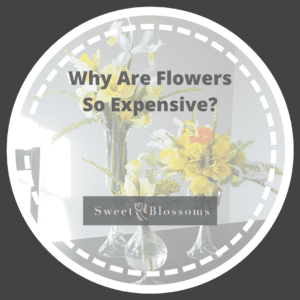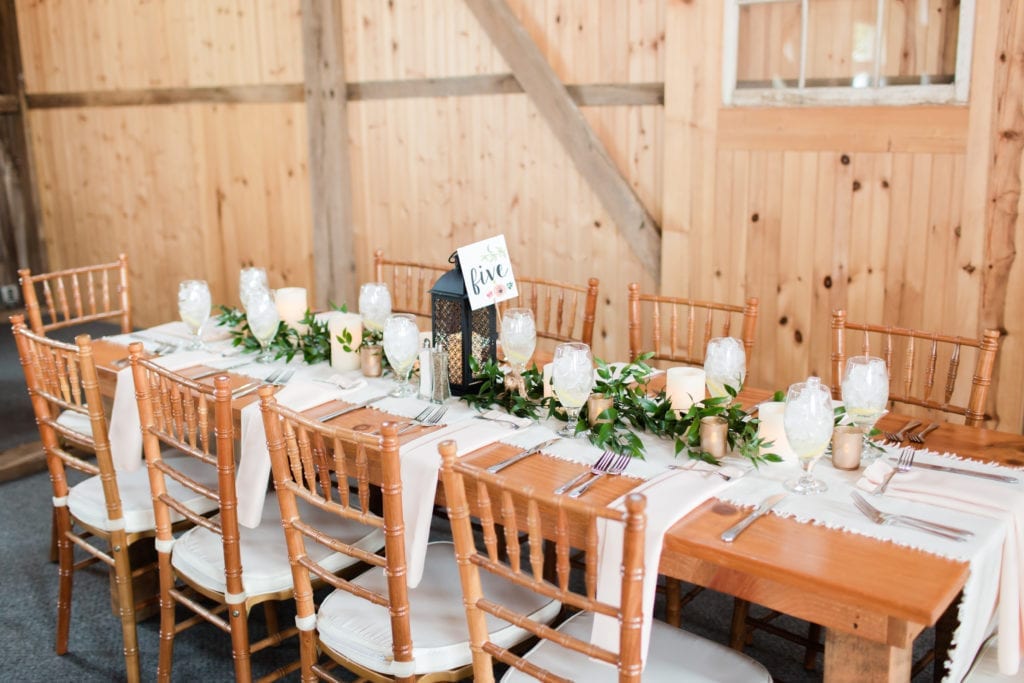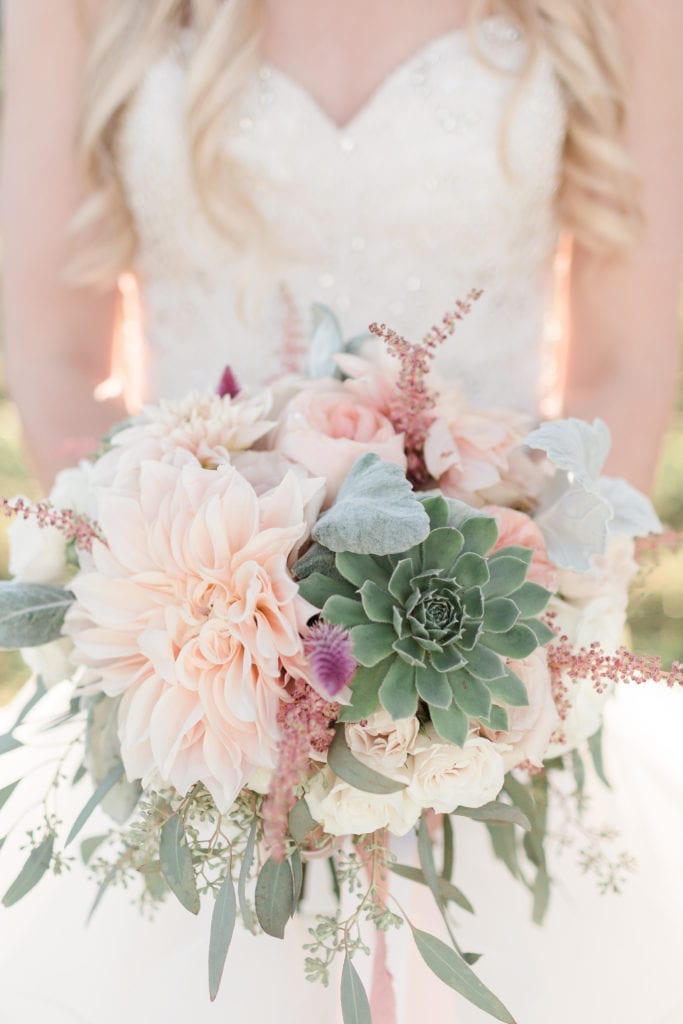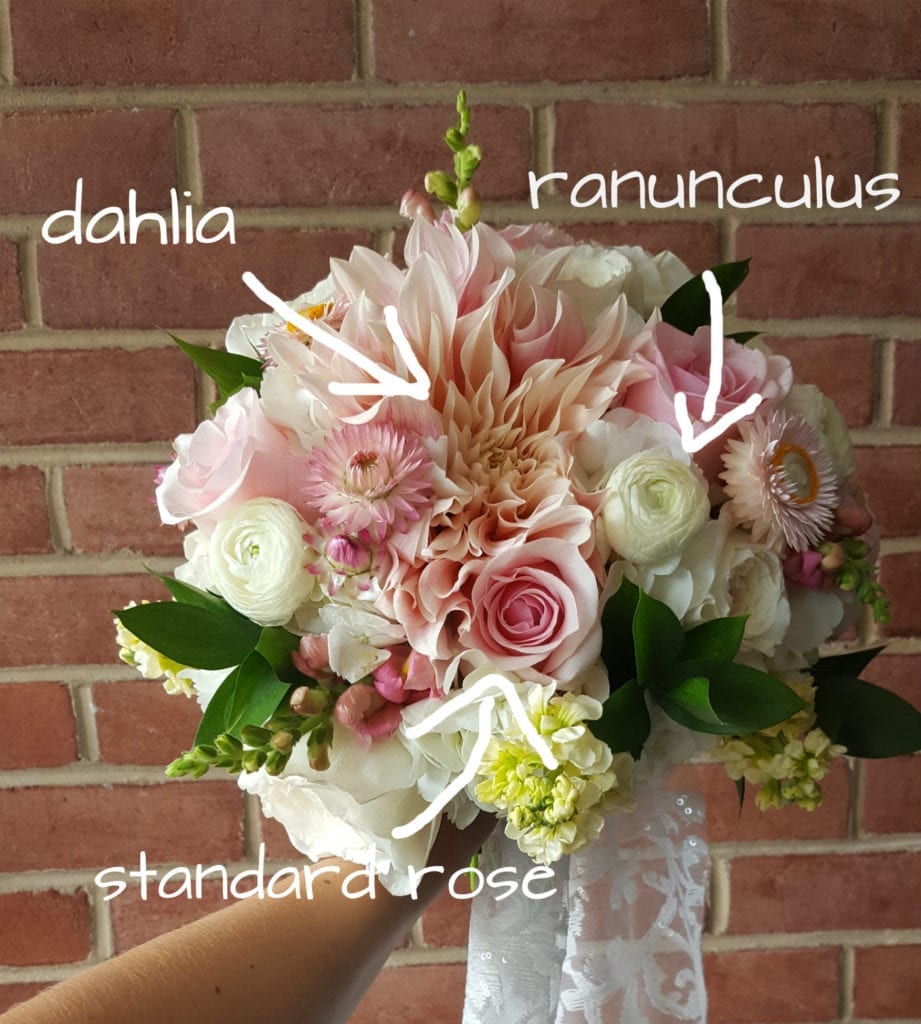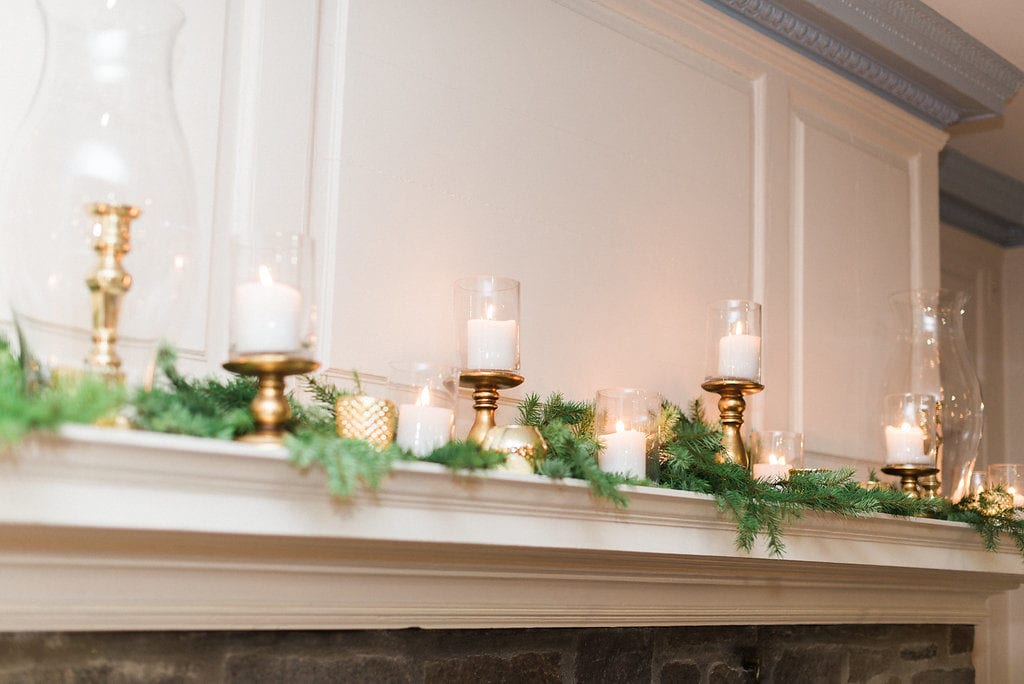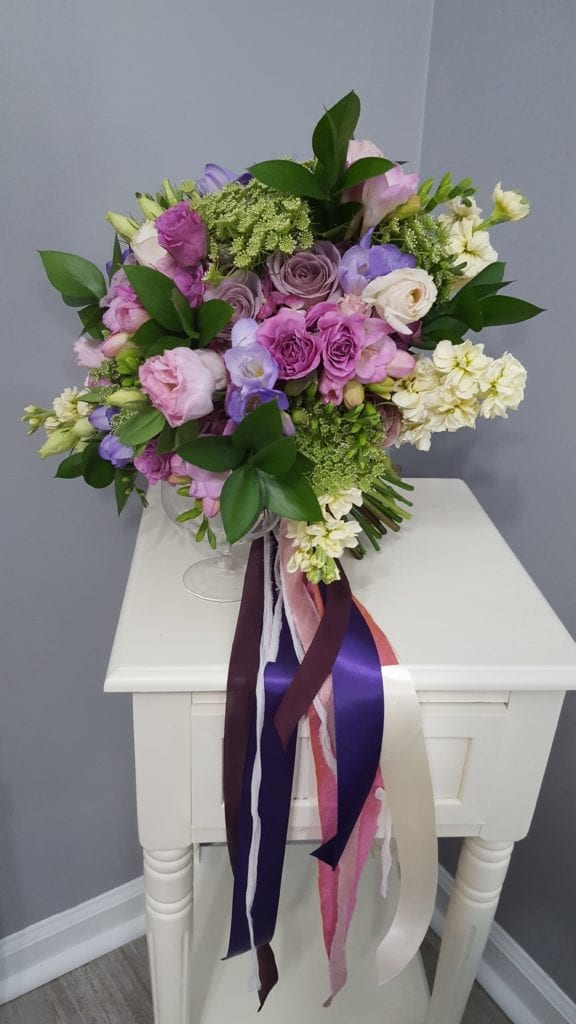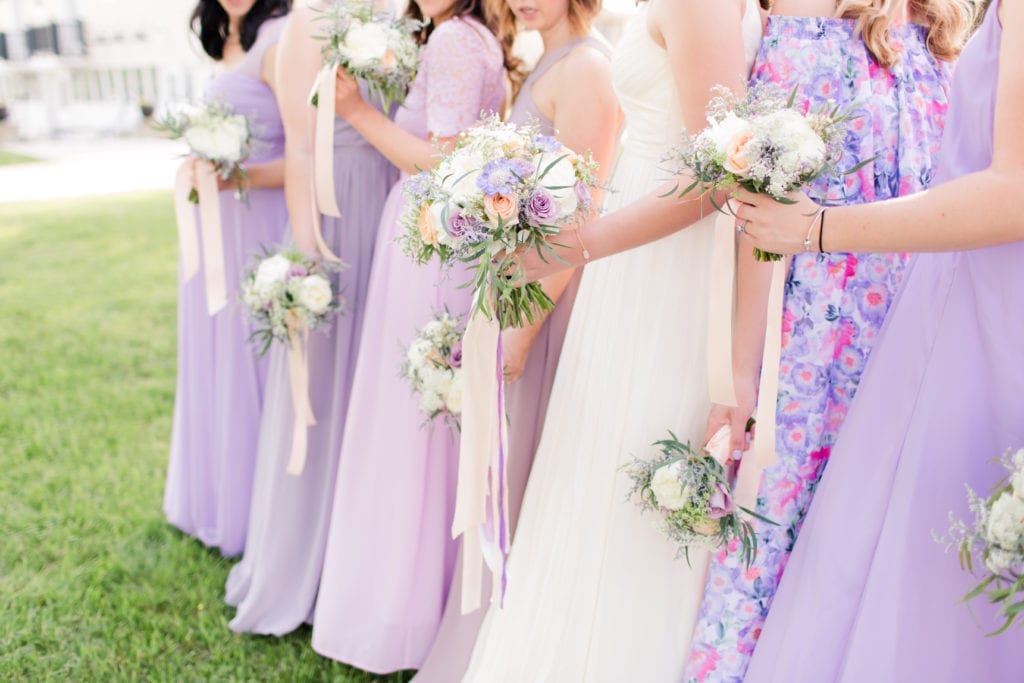Why Are Flowers So Expensive? Part Two: 5 (and a half) Myths about Wedding Flowers
March 22, 2018
Why Are Flowers So Expensive?
So often, I get inquiries from clients who have really big and beautiful plans for their wedding….. and absolutely NO idea what those big plans will cost. And why should they?? Pinterest does not come with pricetags on all those gorgeous images, and my clients (hopefully) are only getting married once. So they have no frame of reference for how to go about allocating a portion of their budget for floral decor. Luckily for my clients, they have someone who DOES know how to go about this–ME!!
The goal of this series is to educate brides/grooms about why flowers cost what they cost, and to create realistic expectations for what floral decor they can have within their budget. I want my clients to be able to make educated decisions that feel good. I never want a client to feel like they got no flowers for their wedding because of their budget, but I also never want a client to have buyer’s remorse. To that end, here is Part Two of a three-part series on Why Are Flowers So Expensive?
Part Two: 5 (and a half) Myths about Wedding Flowers
So we started Part One with an education regarding all the factors that go into the price of flowers. Today’s post will address some commonly heard statements (myths) about wedding flowers and the truth about them.
1) Greenery/Garland is a cheap alternative for flowers. This is a myth. One of the centerpiece designs that is trending right now is a lush garland down the middle of a long farm table. At minimum, these garlands typically start at $15-20 per foot, depending on what greenery is being used. Adding flowers to the garland can easily add another $10-15 per foot. On an 8-10 foot table, you will likely spend $150 for a greenery garland, and over $200 if it includes flowers. It would be perfectly reasonable to have a low, floral centerpiece for these prices. So if greenery/garland is the true expression of your personality and it’s exactly what you want for your wedding, by all means, you should have it. But if you are choosing garland because you think it is cheaper, I think you’ll find that this is not the case. Talk to your florist about how to balance greenery with florals. He/she is the expert and can give you the most educated answers with regard to how to reduce costs in a way that stays within the budget and conveys the style and vision of your wedding.
2) Local/Seasonal blooms are cheaper than “regular” flowers. This could sometimes be the case, but, it is mostly a myth. So, let’s talk about what these terms mean. What is a local flower? Local flowers mean that they were grown within about a 50 mile radius around your florist. Most florists order from wholesalers across the country, meaning that these flowers are shipped (via FedEx, UPS, etc) to the florist. It is reasonable, then, that these shipping costs are included in the pricing of the flowers. The advantage to using local flowers is that the florist does not have to pay to have them shipped to the studio. (Actually the advantages of using local flowers are so numerous that I could write an entire post just about that, but that’s for another day). Now here’s where I admit something that doesn’t make me the happiest, but it’s the truth. We live in a global marketplace, where we can have pretty much anything we want from anywhere in the world, and we can have it almost instantaneously. The truth is that many wedding flowers (in particular, I’m talking about roses, but there are many others) are grown in South America where the growing season is longer, due to the climate. Because of the longer growing season, and because labor is so much cheaper in these locations, flowers can be mass-produced, cut, and shipped at a much lower cost than if they were grown here in the United States. I don’t like it, and I wish things were different, but at this time, this is the world we live in. Buying local does not necessarily mean buying cheaper. So even though your florist doesn’t need to pass on shipping costs for local flowers, the reality is that imported flowers, in many cases, are still cheaper, even with the added cost of shipping. So that’s local flowers.
So, what is a seasonal flower? “Seasonal flowers” means that they are simply “in season.” In other words, they are “available.” So seasonal=available. But here’s the catch. If something is seasonal, then it is not available at all times of the year, which means that it is in high demand, because EVERYONE wants to have those flowers. When a flower is in high demand, people are usually willing to pay a little more to have them. As you can see, this doesn’t exactly translate to “seasonal flowers are cheaper.”
As an example, dahlias are available from late summer through fall until the first frost. They are both a seasonal flower, and (for me) a local flower. However, dahlias are the current darling of the wedding industry and EVERYONE wants them. Therefore, dahlias typically cost as much or more than any other flower you might request for your wedding. If anything, seasonal and local flowers are more special, because their season is limited (seasonal), or because a small business owner has poured his/her heart into each and every bloom. Talk to your florist about how to balance local/seasonal blooms with year-round blooms. He/she is the expert and can give you the most educated answers with regard to how to reduce costs in a way that stays within the budget and conveys the style and vision of your wedding.
3) Dahlias/peonies/hydrangea/[insert name of any other flower here] are expensive flowers so I can’t have them for my wedding. This is also a myth. True, these stems are more expensive per stem than some other flowers. However, cost per stem is not the only factor that must be considered. Dahlias, peonies, and hydrangea have bigger heads than say, a standard rose, or a ranunculus. So in terms of coverage (in an altar arrangement) or size of design (in centerpieces and bouquets), these flowers can be super helpful. As an example (using easy, round numbers for purposes of this post), does it really matter if you use one $4 cafe au lait dahlia, if that $4 dahlia takes up as much space in your bouquet or arrangement as, say, four $1 standard roses? No, it doesn’t. Will you be able to have an all-dahlia bouquet? No, probably not, but you CAN have a few! Moderation is the name of the game here. Talk to your florist about how to balance expensive/premium blooms with less expensive blooms. He/she is the expert and can give you the most educated answers with regard to how to reduce costs in a way that stays within the budget and conveys the style and vision of your wedding.
*This bouquet has a cafe au lait dahlia in the middle. You can see that it is almost 4 times as big as the standard rose and the ranunculus below it.
4) Candles are cheap. Myth. Sure, 3 pillar candles and the glassware they go in are likely cheaper or similar in price (if you bought them yourself) than the rental price that your florist quoted. However, unless you plan to purchase these yourself, set them up on wedding day instead of being with your family and friends, and end up with 60+ candles and glassware that you have to clean up at the end of the night, you may find that it is worth it to rent these from your florist. So what are you paying for that costs so much? You are paying for labor-plain and simple. You are paying your florist to buy these items, store them, clean them (have you ever attempted to clean splashed candle wax out of a glass cylinder? NOT FUN!) At the end of the night, you will get to just leave. You will be able to leave, and relax with your new honey, and not have to pack up hot, wax-filled candles, all thanks to your florist, who has gone home, had some dinner, and returned to your event site in the middle of the night to pick up all of those rented items. You are paying for LABOR. This is one of those situations where you have to evaluate what is important to you when trying to save money. Some brides are willing to do that extra labor themselves in order to save themselves that money. Other brides would rather pay someone else to deal with the candles, in order to have that time with their family and friends. Talk to your florist about how to balance candles and other rentals with blooms and items that you will keep at the end of the night. He/she is the expert and can give you the most educated answers with regard to how to reduce costs in a way that stays within the budget and conveys the style and vision of your wedding.
5) My wedding needs to be on trend and look like the images I see on social media, or match the Pantone Color of the Year. Big, fat, myth. Look, every couple looks back at their wedding 20 years later and thinks it looks dated-no matter if you picked trendy colors, trendy style, trendy decor or not. If we already know this is the case, don’t you want to at least look back and think that you had a wedding that fit your personalities and matched the types of people that you are? If that fit with whatever is trending right now, great! But if it doesn’t, that’s okay too! Florists want to do new things, things they haven’t seen on Pinterest. If you have an idea, share it! Talk to your florist about how to bring your unique vision to life through your decor. He/she is the expert and can give you the most educated answers with regard to how to reduce costs in a way that stays within the budget and conveys the unique style and vision of your wedding.
6) I don’t have a huge budget. I should probably just DIY everything for my wedding. Ok, so maybe this isn’t exactly a myth, but it’s something we need to talk about. Yes, if you are on a tight budget, you are not going to be able to have Kim Kardashian’s floral decor. But before you decide to attempt to do everything yourself, I want you to think about what your time is worth. What’s the time worth on the night before your wedding? Do you want to spend it with your family? Your bridesmaids/groomsmen? By yourself? Do you want to spend it sorting through stems, trying to figure out how to put them together into an eye-pleasing arrangement? What is your time worth on the day of your wedding? Do you want to spend it tying ribbons on your bouquet? Packing up a large vehicle with all your decor, and setting it up on tables? Do you want to spend it with your girls, getting your hair and make-up done? With your boys, getting a fresh shave, or playing a round of golf? If you do decide to do your own flowers, where will you get them from? Where will you store them? Do you have a space to process them, and later design in?
I ask these questions for two reasons. The first is because, if you’re going to do this, you need to think ahead and be prepared for all parts of this, the biggest part being the amount of time it will take, time that will be during some of the most important days of your life. The second is that you may find that it’s worth it to you to spend some money on a professional to do maybe just the personal flowers, or maybe to just make the centerpieces, or a ceremony arch. Not every florist will do a partial order, but many will. You may have to do some extra homework to find the right florist. Some florists and farmer/florists offer garden packages, where you allow them to choose the flowers based on what is growing locally either in their own farm or in nearby farms. Some packages from farms even allow you to buy flowers by the bucket so that you can make your own creations. Some florists have DIY packages in which they’ll help you order flowers, and make designs yourself, like A Garden Party. Other florists offer collections of designs, priced lower because they are not custom made, like Courtenay Lambert Florals/Fraiche Blooms. There are plenty of ways to enlist some professional help without breaking the bank. Talk to your florist about how to balance DIY florals and professionally created designs. He/she is the expert and can give you the most educated answers with regard to how to reduce costs in a way that stays within the budget and conveys the style and vision of your wedding.
Are you seeing a pattern in my message here? It’s so important to TALK TO YOUR FLORIST. They are the expert. Let them help you make decisions that are both in keeping with their design aesthetic and the style of your wedding.
So now that I’ve got you thoroughly confused about everything you thought you knew about planning your floral decor, I want you to remember my goal for writing this. I want to educate you about the price of flowers, and help you make good decisions now that you have realistic expectations regarding your floral decor.
So stay tuned for Part Three: What can I do to Make My Wedding Flowers More Affordable?
Click here to refresh you memory on Part One: How Did These Flowers Get Here?
Click here to skip ahead to Part Three: What Can I Do to Make my Wedding More Affordable?
